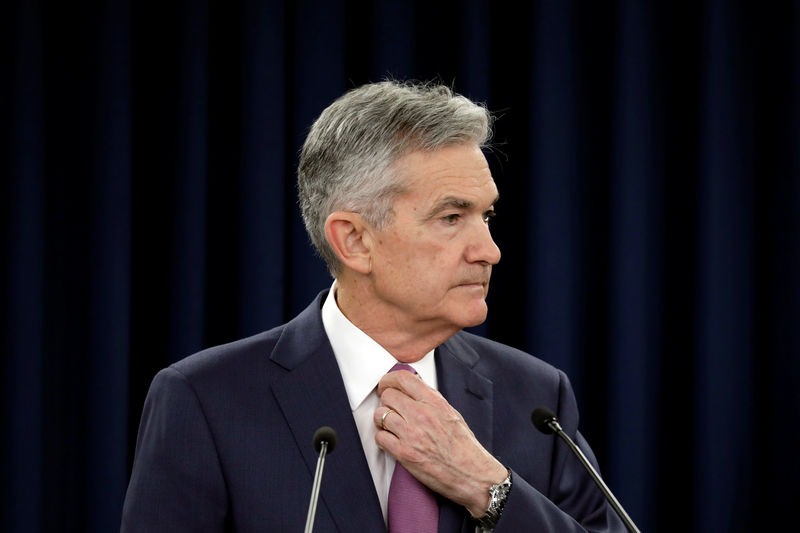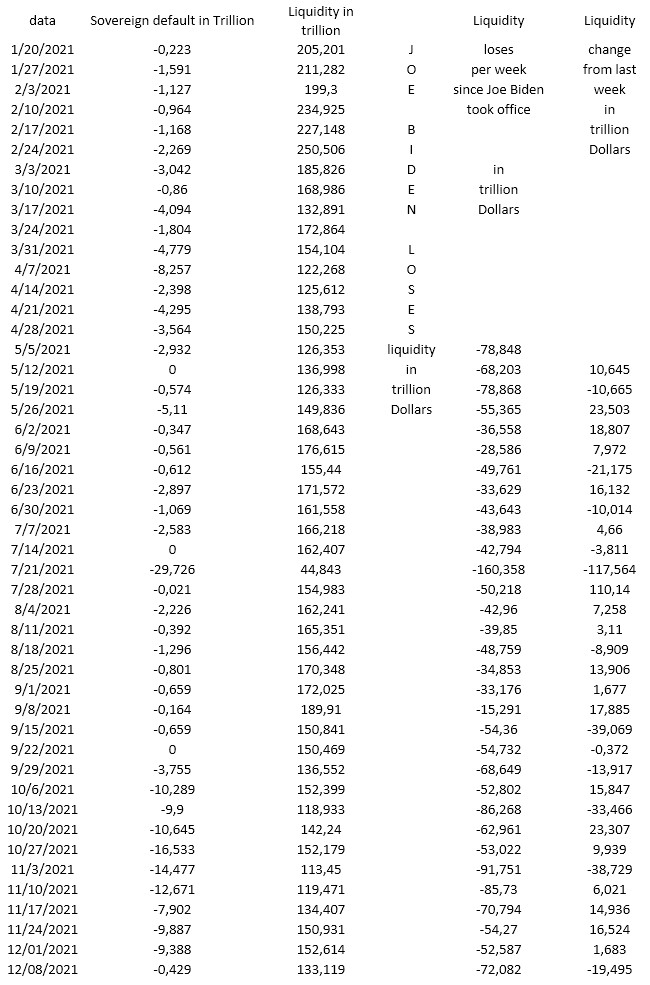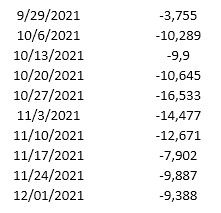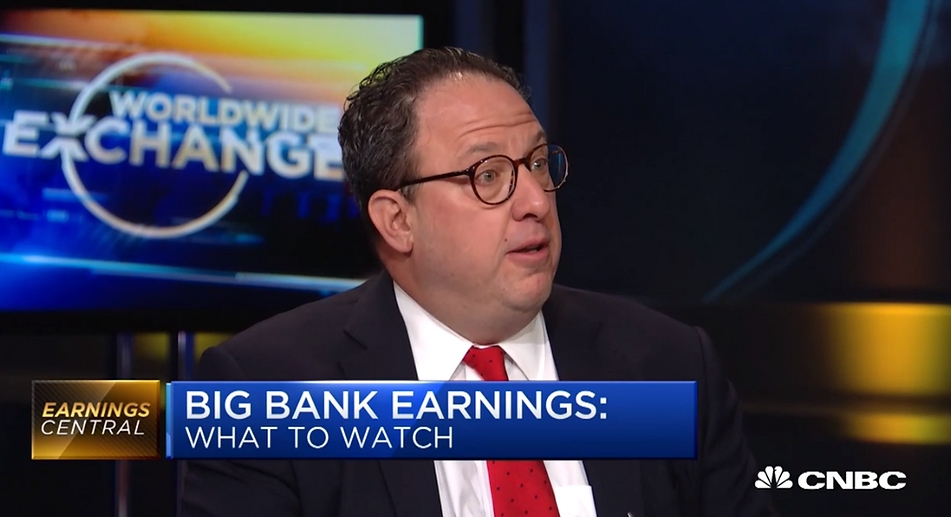Emphasizing the Fed's dilemma.

On Dec. 15 2021
the Federal Reserve Chair Jerome Powell said that inflation is now enemy No. 1
to keeping the economic expansion on track and returning the labor market to
something approaching ebullient pre-pandemic levels. Additionally, it would end
its pandemic-era bond purchases in March and pave the way for three
quarter-percentage-point interest rate hikes by the end of 2022 as the economy
nears full employment and the U.S. central bank copes with a surge of
inflation.
Well; easy to say
as usually but the dilemma comes with numbers; and What did I told
you?
 First of all, I
want you to realize that Jerome Powell at the next policy settings as of the
Federal Open Market Committee hold on Dec 14-15, he Jerome Powell publicly will
announce with whatever statement he will made, that Albert Einstein was right, and that the law
of mathematics forces the FOMC committee to reduce asset purchase. But … not
because of COVID-19 pandemic … but because, they do not have liquidity assets to
keep that pace of securities purchase as of 120 billion U.S.
dollars.
First of all, I
want you to realize that Jerome Powell at the next policy settings as of the
Federal Open Market Committee hold on Dec 14-15, he Jerome Powell publicly will
announce with whatever statement he will made, that Albert Einstein was right, and that the law
of mathematics forces the FOMC committee to reduce asset purchase. But … not
because of COVID-19 pandemic … but because, they do not have liquidity assets to
keep that pace of securities purchase as of 120 billion U.S.
dollars.
 At this time, we
have to emphasize the Fed's dilemma … If it raises interest rates, that raises
the U.S. debt-service costs. So, before Federal Reserve Chair Jerome Powell
approaches this dilemma for a congressional form of loan or considers what rate
of interest on that loan has to be set-offer for a bond issue as new form of
security purchase that has been or rather is in wrapping up the taper of our
asset purchases, the Fed’s needs to compute
the debt service coverage ratio. This ratio helps to determine the borrower’s
ability to make debt service payments because it compares the net operating
income with the amount of principal and interest the firm must pay. … 100% debt
to GDP means that 4-6% interest rates translate to 4-6% of GDP extra deficit,
may be as high as $1 trillion for every year interest rates. If the government
does not tighten by that amount, either immediately or credibly in the near
future, then the higher interest rates must ultimately raise, rather than lower,
inflation. At the end it’s appeared that it might not be able to roll over its
debt and default.
At this time, we
have to emphasize the Fed's dilemma … If it raises interest rates, that raises
the U.S. debt-service costs. So, before Federal Reserve Chair Jerome Powell
approaches this dilemma for a congressional form of loan or considers what rate
of interest on that loan has to be set-offer for a bond issue as new form of
security purchase that has been or rather is in wrapping up the taper of our
asset purchases, the Fed’s needs to compute
the debt service coverage ratio. This ratio helps to determine the borrower’s
ability to make debt service payments because it compares the net operating
income with the amount of principal and interest the firm must pay. … 100% debt
to GDP means that 4-6% interest rates translate to 4-6% of GDP extra deficit,
may be as high as $1 trillion for every year interest rates. If the government
does not tighten by that amount, either immediately or credibly in the near
future, then the higher interest rates must ultimately raise, rather than lower,
inflation. At the end it’s appeared that it might not be able to roll over its
debt and default.
 Central banks
first stop bond buying and then raise interest rates. By keeping down the
risk/default premium in that rate, but there is no question that the bond buying
keeps down interest rate. If the Fed’s stops buying or removes the commitment to
purchases, debt service costs will rise again precipitating the slow decay.
Whether U.S. bond buying programs actually lower treasury yields is or rather be
debatable.
Central banks
first stop bond buying and then raise interest rates. By keeping down the
risk/default premium in that rate, but there is no question that the bond buying
keeps down interest rate. If the Fed’s stops buying or removes the commitment to
purchases, debt service costs will rise again precipitating the slow decay.
Whether U.S. bond buying programs actually lower treasury yields is or rather be
debatable.
The FED’s also
knows, that if it tightens monetary policy, i.e. stop asset purchases and raise
rates, debt-burdened will face severe challenges. The FED’s also knows, that
very expansionary monetary policy, combined with already high inflation and
strong economic growth, creates a serious risk that inflation and inflation
expectations run wild.
Let me quote at
this point Mohamed A. El-Erian - In a move labeled by some as a hawkish pivot
and by others as a great reset, the Federal Reserve’s policy committee just went
in one meeting from its often-repeated characterization of inflation as
“transitory” to portraying it as the “No. 1 enemy” facing the economic recovery.
What has been also pointed by David Rosenberg Chief Economist & Strategist
of Rosenberg Research & Associates Inc. as; … The word “transitory” was
dropped, as advertised, and the taper of the balance sheet is doubling in size
to $30 billion per month from $15 billion. The “dot plots” were more hawkish but
caught up with the market — the median is now at three hikes for next year (up
from one) and another three for 2023.
 In conclusion let’s take a
look as how the United States wallet looks like in genuine reality as Primary
Dealers assets known as liquidity.
In conclusion let’s take a
look as how the United States wallet looks like in genuine reality as Primary
Dealers assets known as liquidity.
The cycle of the
conversion as transformation from liquidity to sovereign GOV default in Trillion
and vice versa, remaining a reverse spiral as its getting smaller and
smaller.
Before on July
2021 the US sovereign default reach the highest point in sovereign GOV default
as - $29,726 in trillion. At this time has been split to 10
smaller sovereign GOV default which bring us total to -$101,692 in trillion. It
looks like Jerome Powell is better magician then the Fed’s
chairman.
By Peter von Roggenhausen Dec. 18 2021.



